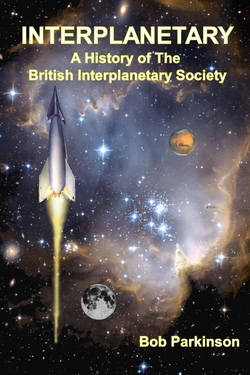Centauri Dreams
Imagining and Planning Interstellar Exploration
Alpha Centauri and the Search for Technosignatures
Is there any chance we may one day find technosignatures around the nearest stars? If we were to detect such, on a planet, say, orbiting Alpha Centauri B, that would seem to indicate that civilizations are to be found around a high percentage of G- and K-class stars. Brian Lacki (UC-Berkeley) examined the question from all angles at the recent Breakthrough Discuss, raising some interesting issues about the implications of technosignatures, and the assumptions we bring to the search for them.
We’re starting to consider a wide range of technosignatures rather than just focusing on Dysonian shells around entire stars. Other kinds of megastructure are possible, some perhaps so exotic we wouldn’t be sure how they operated or what they were for. Atmospheres could throw technosignatures by revealing industrial activity along with their potential biosignatures. We could conceivably detect power beaming directed at interstellar spacecraft or even an infrastructure within a particular stellar system. One conceivable technosignature, rarely mentioned, is a world that has been terraformed.
All this takes us well beyond conventional radio and optical SETI. But let’s take the idea, as Lacki does, to Alpha Centauri, which we can begin by noting that in the past several years, Proxima Centauri b, that promising world in the habitable zone of the nearest red dwarf, has found its share of critics as a possible home to advanced life, if not life itself.
Michael Hippke noted in a 2019 paper that rocket launch to orbit from a super-Earth would be difficult, possibly inhibiting a civilization there from building a local space infrastructure. Milan ?irkovi? and Branislav Vukoti? asked in 2020 whether the frequent flare activity of Proxima Centauri would inhibit radio technologies altogether. Whether abiogenesis could occur under these kinds of flare conditions remains unknown.
Alpha Centauri A and B, the central binary, offer a much more benign environment, both stars being exceedingly quiet at radio wavelengths. Moreover, we have known since the 1990s that habitable orbits are possible around each of them. We have no knowledge about whether the evolution of life would necessarily lead to intelligence; as Lacki pointed out, this is an empirical question — we need data to answer it.
The Drake Equation points to further unresolved issues. In what portion of a star’s lifespan would we expect technological cultures to emerge? Our own civilization has used radio for about a century — one part in 100,000,000 of the lifespan of the Sun. Hence the slide below, which is telling in several ways. Lacki refers here to temporal coincidence, meaning that we might expect societies around other stars to be separated in time, not just in space. Hence this simple graph of a very deep subject.

Deep time always takes getting used to, no matter how many times we think we’ve gotten a handle on figures like 4.6 billion years or, indeed, 13.8 billion years, the lifetimes of the Sun and cosmos respectively. I stared at this figure for some time. Lacki has arbitrarily placed a civilization at Centauri B, as shown by the vertical line, and another at Centauri A and C. Our own is shown in its known place in the Sun’s lifetime, except for the striking fact that the thickness of humanity’s timeline on the chart corresponds to a lifetime of 10 million years. If we wanted a line showing our 100 years of technological use — i.e., radio — the line would have to be 100,000 times thinner.
The odds that the lines of any two stars would coincide seem infinitely small, unless we are talking about societies that can persist over many millions of years. But here we can begin to turn the question around. We might want to rethink nearby technosignatures if we remind ourselves that what they represent is not the civilization itself, but the works it created, which might greatly outlive their builders. Objects like Dyson spheres would seem to fit this category and would exist at planetary scale.
Small artifacts can also last for vast periods — our own Voyagers will be intact for millions of years — though finding them would be an obvious challenge (here it’s worth thinking about the controversy over ‘Oumuamua. If a piece of dead technology were to pass near the Sun, would we be able to recognize its artificial nature? I simply raise the question — I remain agnostic on the question of ‘Oumuamua itself).
But can we be sure we are the first intelligent technological society on Earth? It’s worth considering whether we would know it if an advanced culture had existed hundreds of millions of years ago, perhaps on Earth or a different planet in the Solar System. Looking forward, if we go extinct, will another intelligent species evolve? We don’t know the answer to these questions, and the depth of our ignorance is shown by the fact that we can’t say for sure that intelligence might not evolve over and over again.
If interstellar flight is possible, and it seems to be, we can consider the possibility of intelligence spreading throughout the galaxy, perhaps via self-reproducing von Neumann probes. Even with very slow interstellar velocities, the Milky Way could be settled in relatively short order, astronomically speaking. Michael Hart pointed this out in the 1970s, and Frank Tipler argued in 1980 that at current spacecraft speeds alone, self-replicating probes could colonize the galaxy in less than 300 million years.
Sending physical craft to other stars may be difficult, but there are advantages. So-called Bracewell probes could be deployed that would wait for evidence of intelligence and report back to the home system, as well as carrying inscribed messages intended for the target system. This is Jim Benford’s ‘lurker’ scenario, one which he proposes to explore by searching nearby objects in our own system including the Moon. After all, if they might exist elsewhere, there may be a lurker here.
We don’t know how long a probe like this might remain active, but as a physical artifact, it remains a conceivably detectable object for millions, perhaps billions of years. Finding such a probe in our own system would imply similar probes around other stars and, indeed, the likelihood of a civilization that has spread widely in the galaxy. We might well wonder whether a kind of galactic Internet might exist in which information relays around stars are common, perhaps using gravitational lensing.
In other words, the question of technosignatures at Alpha Centauri doesn’t necessarily imply anything found there would have come from a civilization that originated in that system. The same civilization might have seeded stars widely in the Orion Arm and beyond.
All of these ‘ifs’ define the limits of our knowledge. They also point to a case for looking for technosignatures no matter what our intuitions are about their existence at Alpha Centauri. A lack of obvious technosignatures in our system would imply a similar lack around the nearest stars, but we haven’t run the kind of fine-grained search for artifacts that would find them on our own Moon, much less on nearby smaller objects.

Image: How quickly would a single civilization using self-replicating probes spread through a galaxy like this one (M 74)? Moreover, what sort of factors might govern this ‘percolation’ of intelligence through the spiral? We’ll be looking further at these questions in coming days. Image credit: NASA, ESA, and the Hubble Heritage (STScI/AURA)-ESA/Hubble Collaboration.
Intuition says we’re unlikely to find a technosignature at Alpha Centauri. But I return to the chart on civilizational overlap reproduced above. To me, the greatest take-away here is the placement of our own civilization within the realm of deep time. Given how short the lifetime of technology has been on Earth, I’m reminded viscerally of how precious — and perhaps rare — intelligence is as an emerging facet of a universe becoming aware of itself. That’s true no matter what we find around the nearest stars.

Voyager: A Persistent Clue to the Density of the Interstellar Medium
What are the long-lasting waves detected by Voyager 1? Our first working interstellar probe — admittedly never designed for that task — is operating beyond the heliosphere, which it exited back in 2012. A paper just published in Nature Astronomy explores what’s going in interstellar space just beyond, but still affected by, the heliosphere’s passage through the Local Interstellar Medium (LISM).
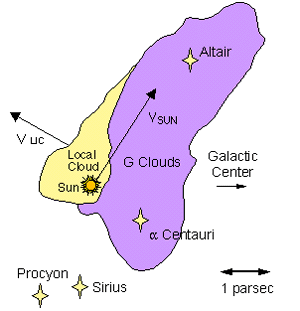
We have a lot to learn out here, for even as we exit the heliosphere, the picture is complex. The so-called Local Bubble is a low-density region of hot plasma in the interstellar medium, the environment of radiation and matter — gas and dust — that exists between the stars. Within this ‘bubble’ exists the Local Interstellar Cloud (LIC), about 30 light years across, with a slightly higher hydrogen density flowing from the direction of Scorpius and Centaurus. The Sun seems to be within the LIC near its boundary with the G-cloud complex, where the Alpha Centauri stars reside.
Image: Map of the local galactic neighborhood showing the Sun located near the edge of our local interstellar cloud (LIC). Alpha-Centauri is located just over 4 light-years away in the neighboring G-cloud complex. Outside these clouds, the density may be lower than 0.001 atoms/cc. Our Sun and the LIC have a relative velocity of 26 km/sec. Credit: JPL.
But if the interstellar medium is a sparse collection of widely spaced particles and radiation, it proves to be anything but quiet. We learn this from Voyager 1’s Plasma Wave Subsystem, which involves two antennae extending 30 meters from the spacecraft (see image below). What the PWS can pick up are clues to the density of the medium that show up in the form of waves. Some are produced by the rotation of the galaxy; others by supernova explosions, with smaller effects from the Sun’s own activity.
Vibrations of the ionized gas — plasma — in the interstellar medium have been detectable since late 2012 by Voyager 1 in the form of ‘whistles’ that show up only occasionally, but offer ways to study the density of the medium. The new work in Nature Astronomy, led by Stella Koch Ocker (Cornell University), sets about finding a more consistent measure of interstellar medium density in the Voyager data.
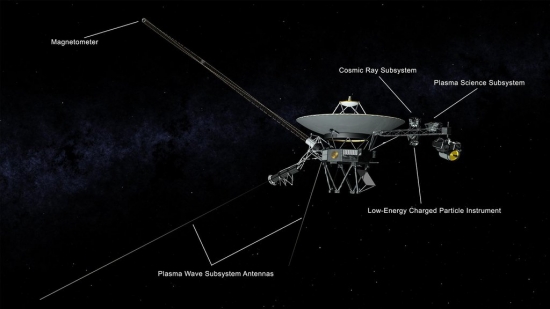
Image: An illustration of NASA’s Voyager spacecraft showing the antennas used by the Plasma Wave Subsystem and other instruments. Credit: NASA/JPL-Caltech.
A weak signal appearing at the same time as a ‘whistle’ in the 2017 Voyager data seems to have been the key finding. Ocker describes it as “very weak but persistent plasma waves in the very local interstellar medium.” When whistles appear in the data, the tone of this plasma wave emission rises and falls with them. Adds Ocker:
“It’s virtually a single tone. And over time, we do hear it change – but the way the frequency moves around tells us how the density is changing. This is really exciting, because we are able to regularly sample the density over a very long stretch of space, the longest stretch of space that we have so far. This provides us with the most complete map of the density and the interstellar medium as seen by Voyager.”
So we have an extremely useful instrument, Voyager 1’s Plasma Wave Subsystem, continuing to return data with increasing distance from the Sun. Analyzing the data over time, we learn that the electron density around the spacecraft began rising in 2013, just after its exit from the heliosphere, and reached current levels in 2015. These levels, which persist to the end of 2020 through the dataset, show a 40-fold increase in electron density. Up next for Ocker and team is the development of a physical model of the plasma wave emission that will offer insights into its proper interpretation.
As we begin to think seriously about interstellar probes in this century, it’s striking how much we have to learn about the medium through which they will pass. Voyager 1 is helping us learn about conditions immediately outside the heliosphere. A probe sent to Alpha Centauri will need to cross the boundary between the Local Interstellar Cloud and the G-cloud, a region we have yet to penetrate. The nature of and variation within the interstellar medium will require continuing work with our admittedly sparse data.
The paper is Ocker et al., “Persistent plasma waves in interstellar space detected by Voyager 1,” Nature Astronomy 10 May 2021. Abstract / Preprint.

Interstellar Research Group: 7th Interstellar Symposium Call for Papers
Regular Acceptance: Abstracts Due June 30, 2021
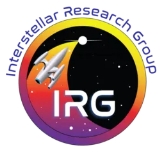
The Interstellar Research Group (IRG) hereby invites participation in its 7th Interstellar Symposium, hosted by the University of Arizona to be held from Friday, September 24 through Monday, September 27, 2021, in Tucson, Arizona. The Interstellar Symposium has the following elements:
The Interstellar Symposium focuses on all aspects of interstellar travel (human and robotic), including power, communications, system reliability/maintainability, psychology, crew health, anthropology, legal regimes and treaties, ethics, and propulsion with an emphasis on possible destinations (including the status of exoplanet research), life support systems, and habitats.
Working Tracks are collaborative, small group discussions around a set of interdisciplinary questions on an interstellar subject with the objective of producing “roadmaps” and/or publications to encourage further developments in the respective topics. This year we will be organizing the Working Tracks to follow selected plenary talks with focused discussions on the same topic.
Sagan Meetings. Carl Sagan famously employed this format for his 1971 conference at the Byurakan Observatory in old Soviet Armenia, which dealt with the Drake Equation. Each Sagan Meeting will invite five speakers to give a short presentation staking out a position on a particular question. These speakers will then form a panel to engage in a lively discussion with the audience on that topic.
Seminars are 3-hour presentations on a single subject, providing an in depth look at that subject. Seminars will be held on Friday, September 24, 2021, with morning and afternoon sessions. The content must be acceptable to be counted as continuation education credit for those holding a Professional Engineer (PE) Certificate.
Other Content includes, but is not limited to, posters, displays of art or models, demonstrations, panel discussions, interviews, or public outreach events.
Publications: Since the IRG serves as a critical incubator of ideas for the interstellar community. We intend to publish the work of the 7th Symposium in many outlets, including a complete workshop proceedings in book form. No Paper, No Podium: If a written paper is not submitted by the final manuscript deadline (To Be Announced), authors will not be permitted to present their work at the event. Papers should be original work that has not been previously published. Select papers may be submitted for journal publication, such as in the Journal of the British Interplanetary Society (JBIS).
Video and Archiving: All symposium events may be captured on video or in still images for use on the IRG and other sponsors websites, in newsletters and social media. All presenters, speakers and selected participants will be asked to complete a Release Form that grants permission for IRG to use this content as described.
ABSTRACT SUBMISSION
Abstracts for the Interstellar Symposium must relate to one or more of the many interstellar mission related topics, such as power, communications, system reliability/maintainability, psychology, crew health, anthropology, legal regimes and treaties, ethics, and propulsion with an emphasis on possible destinations (including the status of exoplanet research), life support systems, and habitats.
All abstracts must be submitted online here. Submitters must create accounts on the IRG website in order to submit abstracts.
PRESENTING AUTHOR(S) – Please list ONLY the author(s) who will actually be in attendance and presenting at the conference. (first name, last name, degree – for example, Susan Smith, MD)
ADDITIONAL AUTHORS – List all authors here, including Presenting Author(s) – (first name, last name, degree(s) – for example, Mary Rockford, RN; Susan Smith, MD; John Jones, PhD)
ABBREVIATIONS within the body should be kept to a minimum and must be defined upon first use in the abstract by placing the abbreviation in parenthesis after the represented full word or phrase. Proprietary drug names and logos may NOT be used. Non-proprietary (generic) names should be used.
ABSTRACT LENGTH – The entire abstract, (EXCLUDING title, authors, presenting author’s institutional affiliation(s), city, state, and text), including any tables or figures should be a maximum of 350 words. It is your responsibility to verify compliance with the length requirement.
ABSTRACT STRUCTURE – abstracts must include the following headings:
- Title – the presentation title
- Background – describes the research or initiative context
- Objective – describes the research or initiative objective
- Methods – describes research methodology used. For initiatives, describes the target population, program or curricular content, and evaluation method
- Results – summarizes findings in sufficient detail to support the conclusions
- Conclusions – states the conclusions drawn from results, including their applicability.
Questions and responses to this Call for Papers, Workshops and Participation should be directed to: info@irg.space.
For updates on the meeting, speakers, and logistics, please refer to the website: https://irg.space/irg-2021/
The Tennessee Valley Interstellar Workshop (doing business as the Interstellar Research Group, IRG) is a non-profit scientific, educational corporation in the state of Tennessee. For U.S. tax purposes, IRG is a tax-exempt, 501(c)(3) educational, non-profit corporation.

A Bright Young World in the Ultraviolet
In the ranks of exoplanets we can actually see, we can include the gas giant PDS 70b, a young world orbiting the K-dwarf PDS 70. Bear in mind that of the more than 4,000 exoplanets thus far catalogued, only about 15 have been directly imaged, an indication of how tricky this work is and how far we have to go as we contemplate imaging Earth-size planets and taking spectroscopic measurements of their atmospheres. The most recent PDS 70b work was performed with the Hubble instrument, and is to my knowledge the first direct detection of an exoplanet in the ultraviolet.
About 370 light years from Earth, PDS 70 (also known as V1032 Centauri) is a T Tauri star, a class of variables less than 10 million years old; this one appears to be no more than 5 million years old, and its largest planet is still in the process of building mass. The star is known to host at least two actively forming planets within its circumstellar disk of gas and dust, although only the larger is apparent in these UV observations.
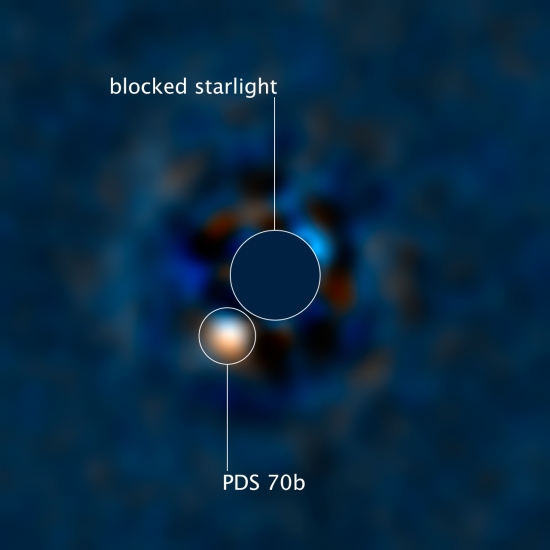
Image: Hubble observations pinpoint planet PDS 70b. A coronagraph on Hubble’s camera blocks out the glare of the central star for the planet to be directly observed. Though over 4,000 exoplanets have been cataloged so far, only about 15 have been directly imaged to date by telescopes. The team’s fresh technique for using Hubble to directly image this planet paves a new route for further exoplanet research, especially during a planet’s formative years. Credit: Joseph DePasquale (STScI).
What we’re seeing here is planet formation as flagged by the radiation produced by hot gas falling onto the planet, allowing estimates of how fast PDS 70b is gaining mass. In its short (in astronomical terms) history, the world has grown to roughly 5 Jupiter masses. The accretion rate is now dwindling, and the team studying the planet, led by Yifan Zhou (University of Texas at Austin), describes it as being at the end of the formation process.
Two disks are actually at play here, the first being the circumstellar disk that is supplying growth materials in the form of gas and dust to the entire infant system; the second is the disk around PDS 70b, which is drawing off material from the larger disk, producing hot patches apparent at ultraviolet wavelengths on the forming planet. We can hypothesize that a system of satellites like Jupiter’s could form here as well.
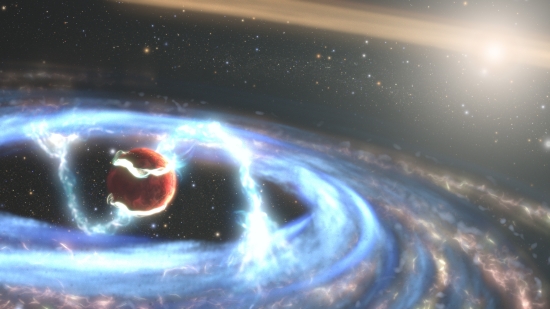
Image: This illustration of the newly forming exoplanet PDS 70b shows how material may be falling onto the giant world as it builds up mass. By employing Hubble’s ultraviolet light (UV) sensitivity, researchers got a unique look at radiation from extremely hot gas falling onto the planet, allowing them to directly measure the planet’s mass growth rate for the first time. The planet PDS 70b is encircled by its own gas-and-dust disk that’s siphoning material from the vastly larger circumstellar disk in this solar system. The researchers hypothesize that magnetic field lines extend from its circumplanetary disk down to the exoplanet’s atmosphere and are funneling material onto the planet’s surface. The illustration shows one possible magnetospheric accretion configuration, but the magnetic field’s detailed geometry requires future work to probe. The remote world has already bulked up to five times the mass of Jupiter over a period of about five million years, but is anticipated to be in the tail end of its formation process. Credit: NASA, ESA, STScI, Joseph Olmsted (STScI).
According to the paper, the luminosity we see in these data is low compared to the mass accretion rate the researchers had expected through their shock modeling, leading to this note at the end of the paper. The hydrogen alpha (Hα) spectral line referenced below is the brightest hydrogen line in the visible spectral range:
The discrepancy suggests that either Hα production in planetary accretion shocks is more efficient than these models predicted, or we underestimated the accretion luminosity/rate. By combining our observations with planetary accretion shock models that predict both UV and Hα flux, we can improve the accretion rate measurement and advance our understanding of the accretion mechanisms of gas giant planets.
So when it comes to probing the accretion of giant planets, we’re making progress, as witness Hubble’s ability to examine ultraviolet emissions from this growing young world. This is crafty work that extends Hubble’s capabilities by a factor of five when it comes to observing a planet close to its star, a tribute to skillful image processing. Co-author Brendan Bowler, a college of Zhou at the University of Texas at Austin, adds:
“Thirty-one years after launch, we’re still finding new ways to use Hubble, Yifan’s observing strategy and post-processing technique will open new windows into studying similar systems, or even the same system, repeatedly with Hubble. With future observations, we could potentially discover when the majority of the gas and dust falls onto their planets and if it does so at a constant rate.”
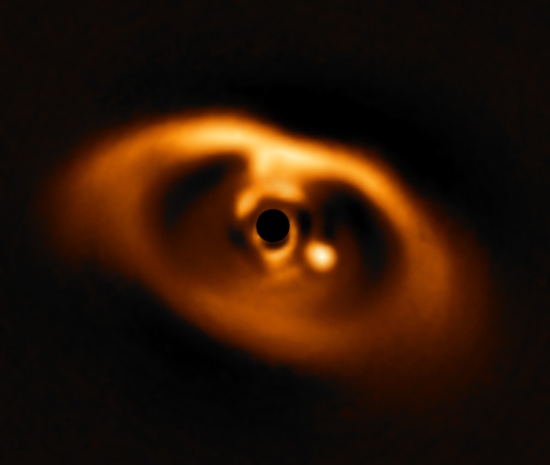
Image: The European Southern Observatory’s Very Large Telescope caught the first clear image of a forming planet, PDS 70b, around a dwarf star in 2018. The planet stands out as a bright point to the right of the center of the image, which is blacked out by the coronagraph mask used to block the light of the central star. Credit: ESO, VLT, André B. Müller (ESO).
The paper is Yifan Zhou et al., “Hubble Space Telescope UV and Hα Measurements of the Accretion Excess Emission from the Young Giant Planet PDS 70 b,” Astronomical Journal Vol. 161, No. 5 (29 April 2021), 244. Abstract / Preprint.

Exoplanet Geology: A Clue to Habitability?
Because we’ve just looked at how a carbon cycle like Earth’s may play out to allow habitability on other worlds, today’s paper seems a natural segue. It involves geology and planet formation, though here we’re less concerned with plate tectonics and feedback mechanisms than the composition of a planet’s mantle. At the University of British Columbia – Okanagan, Brendan Dyck argues that the presence of iron is more important than a planet’s location in the habitable zone in predicting habitability.
We learn that planetary mantles become increasingly iron-rich with proximity to the snow-line. In the Solar System, Mercury, Earth and Mars show silicate-mantle iron content that increases with distance from the Sun. Each planet had different proportions of iron entering its core during the planet formation period. The differences between them are the result of how much of their iron is contained in the mantle versus the core, for each should have the same proportion of iron as the star they orbit.
Core mass fraction (CMF) is a key player in this paper, defined as the extent of planetary core formation as a function of total planet mass. We start with similar precursor materials, but variations in the core mass fraction point to the differences in the silicate mantle and the surface crusts that should result on each rocky world. CMF itself “reflects the oxidation gradient present in the proto-planetary disc and the increasing contribution of oxidized, outer solar system material to planetary feedstocks.” We can use CMF as a marker for how a given planet will evolve.
Can we expect a similar growth in iron content in the mantles of planets around other stars? Evidently so. From the paper:
Oxidation gradients have been observed around other main sequence stars… and similar gradients in mantle iron contents are thus expected in other planetary systems possessing rocky differentiated planets… Consequently, even if each rocky body in a multi-planetary system forms from similar precursor material, variations in their core mass fraction will generate silicate mantles and derivative surface crusts that exhibit distinct compositional and petrophysical differences. Hence, variations in CMF may have a disproportionate role in determining a planet’s geological evolution and its future habitability.

Image: Brendan Dyck (University of British Columbia – Okanagan) is using his geology expertise about planet formation to help identify other planets that might support life. Credit: NASA/Goddard Space Flight Center.
To explore how core formation influences both the thickness and composition of a planet’s crust, Dyck and team developed computer models simulating mantle and crust production in planets through a range of core mass fractions. As we saw on Tuesday, Earth’s CMF is 0.32, while Mars’ is 0.24. Dyck’s models investigate core mass fractions between 0.34 and 0.16.
So here we have some interesting observables to juggle. The modeling shows that a larger core points to thinner crusts; smaller cores produce thicker crusts that are more iron-rich, along the model of Mars. And now we circle back to plate tectonics, which is dependent upon the thickness of the planetary crust, remembering that plate tectonics is thought to be critical for a carbon cycle that can support life. The conclusion is apparent: We may well find numerous planets located within the habitable zone whose early formation history makes them unable to support water on the surface.
Adds Dyck:
“Our findings show that if we know the amount of iron present in a planet’s mantle, we can predict how thick its crust will be and, in turn, whether liquid water and an atmosphere may be present. It’s a more precise way of identifying potential new Earth-like worlds than relying on their position in the habitable zone alone.”
These conclusions again point to the critical nature of chemical composition in stellar systems, which is a key area of research made feasible by new instruments like the James Webb Space Telescope. Assuming a (fingers crossed) safe launch and deployment, JWST should be able to measure the amount of iron present in exoplanetary systems, which will offer clues as to whether life is possible there.
The paper is Dyck et al., “The effect of core formation on surface composition and planetary habitability,” in process at Astrophysical Journal Letters (preprint).

An Exoplanet Model for the Carbon Cycle
Earth’s long-term carbon cycle is significant for life because it keeps carbon in transition, rather than allowing it to accumulate in its entirety in the atmosphere, or become completely absorbed in carbonate rocks. The feedback mechanism works over geological timescales to allow stable temperatures as CO2 cycles between Earth’s mantle and the surface. As a result, we have carbon everywhere. 65,500 billion metric tons stored in rock complements the carbon found in the atmosphere and the oceans, as well as in surface features including vegetation and soil. It’s a long-term cycle that can vary in the short term but be stabilizing over geological time-frames.
The Sun has increased in luminosity substantially since Earth’s formation, but the long-term carbon cycle is thought to be the key to maintaining temperatures on the surface suitable for life. Does it exist on other planets? It’s an open question, as astronomer Mark Oosterloo (University of Groningen, The Netherlands) points out:
“We don’t know if there are any other planets at all with plate tectonics and a carbon cycle. In our solar system, the Earth is the only planet where we have found a carbon cycle. We hope that our model can contribute to the discovery of an exoplanet with a carbon cycle, and therefore, possibly life.”
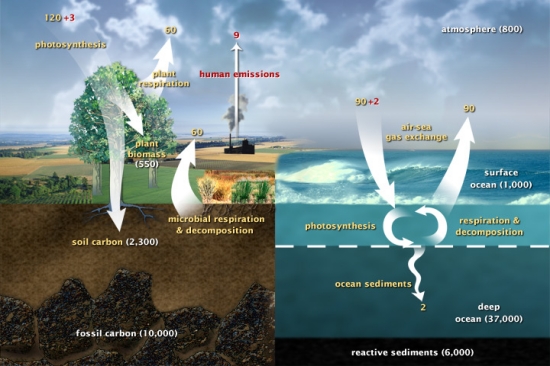
Image: This diagram of the fast carbon cycle shows the movement of carbon between land, atmosphere, and oceans. Yellow numbers are natural fluxes, and red are human contributions in gigatons of carbon per year. White numbers indicate stored carbon. Credit: Diagram adapted from U.S. DOE, Biological and Environmental Research Information System.
Oosterloo is lead author of a paper that has just appeared in Astronomy & Astrophysics. Working with researchers at SRON (Netherlands Institute for Space Research) and Vrije Universiteit Amsterdam, the scientist has developed a model designed to analyze whether or not a carbon cycle can emerge on an exoplanet, varying its mass, core size and the amount of radioactive isotopes it contains.
Quite a lot goes into determining how the feedback mechanisms of a carbon cycle work, enough so that our problems in observing exoplanets swim into sharp relief — we’re usually limited to mass and radius measurements along with a degree of atmosphere characterization on those worlds where we can deploy methods like transmission spectroscopy, viewing the light of a star as it is filtered by a planet’s atmosphere.
But we’re learning about the composition of the planets slowly but surely. The authors cite Kepler-452b, a world whose interior has been shown to have a larger fraction of rock than Earth, which would affect the chemical structure of the interior. That in turn affects the amount and type of volatiles outgassed into the atmosphere.
To go beyond this, the authors investigate how planetary interiors of different composition affect long-term carbon cycling as enabled by plate tectonics. This involves not just the relative abundances of radioactive isotopes, the size of the planet’s core and its mass, but also into the evolution of CO2 in the atmosphere. The team’s two-component model, connecting mantle convection to the emergence of a long-term carbon cycle, has plate tectonics at its center — in fact, the paper refers to mean plate speed as “the key coupling variable between the two models.”
Among the findings thus far is that the cooling of a planet’s mantle (and its effect on the tectonic plate speed) produces gradually declining CO2 levels over time as outgassing slowly decreases. And note the effects of varying a planet’s internal heating:
A long-term carbon cycle driven by plate tectonics could operate efficiently on planets with amounts of radiogenic heating in their mantles different from Earth. However, planets with their mantles enriched in radioactive isotopes with respect to Earth, may favor the development of warmer climates resulting from a more CO2 rich atmosphere. This is in particular the case for a planet with a higher thorium abundance. In addition, the carbon cycle operates more efficiently on planets rich in radioactive isotopes, motivating the characterization of planetary systems around stars whose atmospheres are rich in thorium or uranium.
A long-term carbon cycle regulated by plate tectonics, say the authors, may not operate on planets with a core mass fraction greater than 0.8 (for reference, Earth’s core mass fraction is 0.32 of the planetary mass; that of Mars is 0.24). Here the value of mass/radius measurements on Earth-sized planets becomes apparent. And it was surprising to me to learn that the effects of carbon cycling can be felt relatively quickly. In the authors’ models, equilibrium is achieved between 100 and 200 million years. In other words, if plate tectonics is operational, an exoplanet does not have to be old to have its atmosphere affected by a long-term carbon cycle.
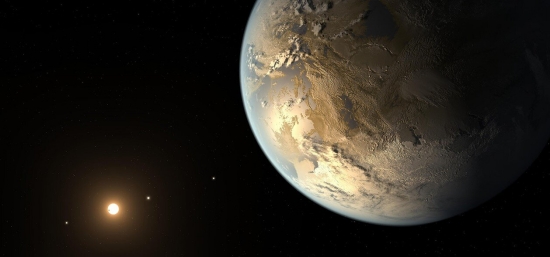
Image: An artist’s impression of an Earth-like exoplanet. Can we develop the tools to establish the presence of a carbon cycle on such worlds? Credit: NASA.
The significance of this paper in my estimation is that it shows that carbon cycling can work as a regulator of climate for planets with a wide range of masses, core sizes and radioactive isotope abundances. As noted above, there is more efficient carbon cycling on planets with a high level of thorium or uranium in their mantles. That would imply that mapping these elements as found in their host stars would be a useful observational tool in exploring potential habitability of planets in a given stellar system.
The paper is Oosterloo, et al., “The role of planetary interior in the long-term evolution of atmospheric CO2 on Earth-like exoplanets,” Astronomy & Astrophysics Vol. 649, A15 (3 May, 2021). Abstract / Preprint.

